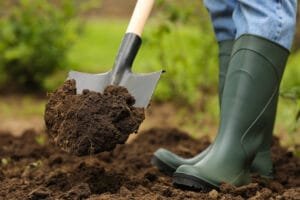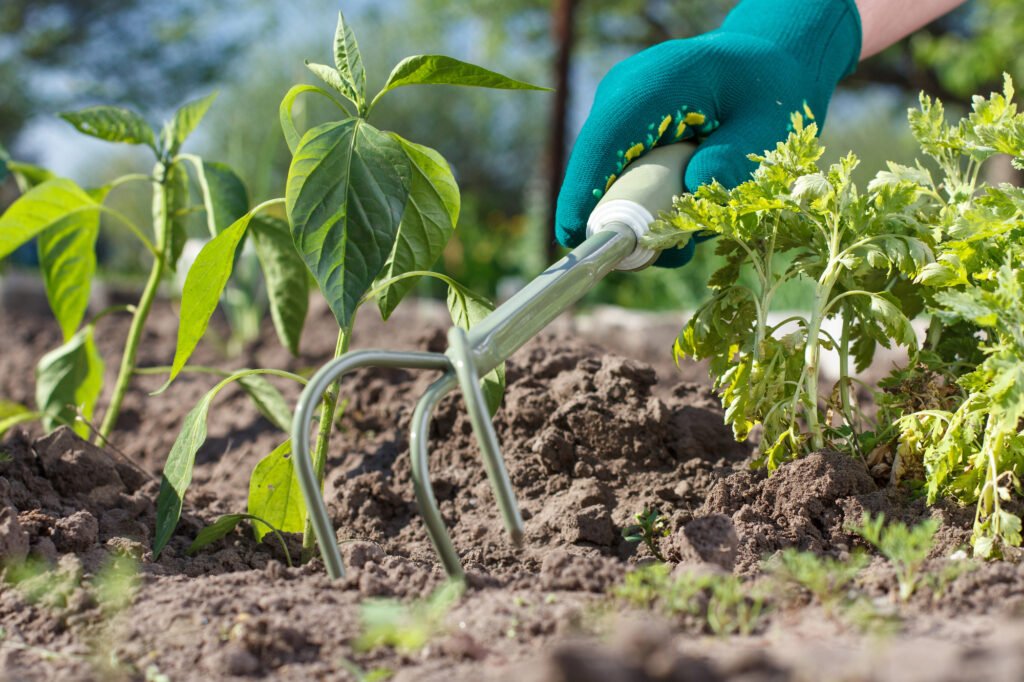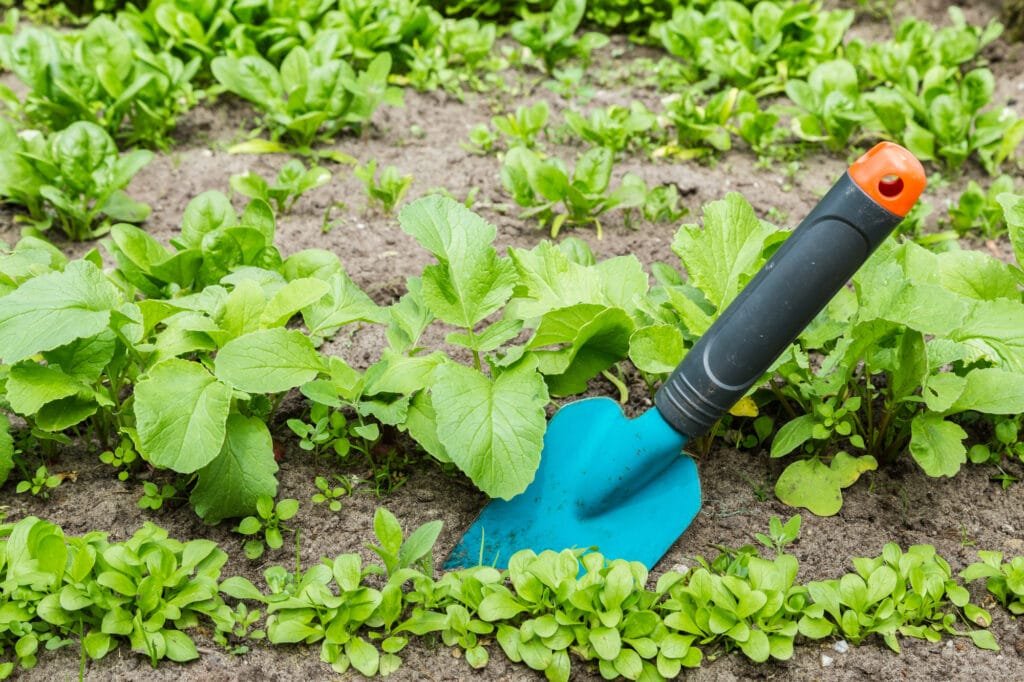Garden shovels, with their curved, pointed blades and scooped design, excel at digging, lifting, and moving loose materials like soil, mulch, and gravel.
Garden spades, featuring flat, rectangular blades, are designed primarily for precise edging, dividing plants, and creating clean-cut planting holes.
The fundamental difference between these tools lies in their intended function: shovels scoop and transport with volume efficiency, whereas spades cut and lift with precision.
Gardeners typically choose shovels when requiring soil excavation, moving materials, creating sloped holes for planting, or working in unbroken ground where the pointed tip helps penetrate the soil.
Ideal Features of an Ergonomic Garden Shovel
An effectively designed ergonomic garden shovel minimizes strain while maximizing digging and scooping efficiency through careful attention to user biomechanics. When evaluating ergonomic garden shovels, prioritize these essential features:
- Ergonomic handle design – D-shaped, O-shaped, or contoured grips that distribute pressure evenly across the hand
- Optimal shaft length – Proportioned to user height (typically 44-48 inches) to prevent excessive bending
- Strategic weight distribution – Balance point positioned to reduce strain during the lifting motion
- Proper blade curvature – Sufficient scoop depth for material transport without excessive weight
- Non-slip grip material – Textured rubber or composite materials that maintain grip in wet conditions
- Shock-absorbing features – Composite shaft materials or cushioned handle areas that minimize impact vibration
- Appropriate weight – Light enough for extended use (under 5 pounds) while maintaining structural integrity
- Angled foot placement – Properly designed top edge for secure and comfortable foot positioning
Smooth Gardening’s Ergonomic Shovel Picks
Some links on this site are affiliate links. This means if you click and make a purchase, I may earn a commission at no extra cost to you. As an Amazon Associate, I earn from qualifying purchases. Thank you for your support!
Tier 1 (Made in USA/China)
- Award-winning modern shovel with a classic round point design and a slightly cupped blade that is ideal for clay and roc…
- Garden shovel with an extra-wide, elevated forward step that makes digging safer for you since it is designed to support…
- Durable heat-treated carbon steel blade that measures approximately 9.5 x 11.25 inches with fiberglass shaft; Entire too…
Tier 2 (Made in China)
- SIZE & WEIGHT- The digging shovel measures 9×3.5×43 inches (LxWxH) and weighs 4.7lbs
- MATERIAL – The head of the round shovel is made of 1050MN steel,the handle is made of fiberglass and the hand grip is ma…
- SHARP BLADE – Custom sawtooth blade is ideal for scooping harder ground or dirt that is full of tough roots
Tier 3 (Made in Finland/Poland)
- GARDENING ESSENTIAL: Heavy duty, ergonomic shovel ideal for a variety of gardening tasks like digging in tough soil, dig…
- MAXIMUM POWER AND PRECISION: Large D-handle offers powerful two-handed control for digging; Powder-coated steel enhances…
- LONG-LASTING AND RELIABLE: Sharpened steel blade penetrates tough soil with ease and stays sharp through heavy use, prov…
Tier 4 (Made in USA)
- YurDocaYurDocaYurDocaYurDoca
Tier 5 (Made in USA/China)
- Digging Garden Shovel: Take on lawn and yard tasks with the Sun Joe 9-inch spear head digging shovel and patented spring…
- Back-Saving Leverage: Spring-loaded assist handle reduces discomfort by transferring lifting force to your lower hand fo…
- Rugged Steel Blade: Durable 9-inch forged steel spear head blade cuts through compacted soil, slices roots, and works as…
Special Considerations
Beyond standard ergonomic features, consider these additional factors when selecting a garden shovel suited to your specific gardening situation:
Blade Material Composition:
- Carbon steel offers durability but requires more maintenance to prevent rust
- Stainless steel resists rust but adds weight to the overall tool
- Aluminum provides lightweight performance but may bend under heavy pressure
Handle Material Options:
- Fiberglass provides lightweight strength with vibration dampening properties
- Hardwood offers traditional appeal with natural grip texture
- Composite materials combine strength with weather resistance
Specialized Design Variations:
- Curved shafts reduce back strain by altering the lifting angle
- Left or right-handed specific designs optimize biomechanics for different users
- Telescoping handles accommodate multiple users of different heights
Soil Type Compatibility:
- Sharper pointed blades penetrate clay soils more effectively
- Broader scoops move larger volumes in looser soils
- Reinforced blade edges withstand rocky soil conditions
Maintenance Requirements:
- Edge sharpening frequency based on soil abrasiveness
- Cleaning protocols to prevent material buildup
- Storage considerations to prevent moisture damage
Conclusion
Whether excavating areas for new garden beds, moving compost or mulch, or preparing larger planting holes for shrubs and trees, select a shovel with proper ergonomic design elements, appropriate weight distribution, and materials suited to your specific soil conditions.
If you need to create a fine edge along a border or plot, divide a plant, or transplant, use an ergonomic spade.
Once you’ve completed the heavy lifting, use an ergonomic trowel, hand cultivator, and/or hand weeder to maintain good cultural conditions without damaging your thriving plants.








